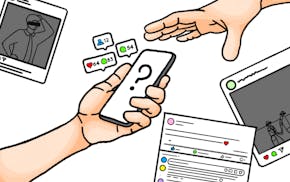Opinion editor's note: Editorials represent the opinions of the Star Tribune Editorial Board, which operates independently from the newsroom.
•••
Just about any given day, there are reports about gunfire somewhere in Minneapolis. In a few communities, residents say the sound of bullets flying has sadly become part of the regular background noise of their neighborhoods. Minneapolis Police Department figures show that, so far this year, there have been more than 3,600 shots fired calls — mostly concentrated in a few parts of the city.
And because that gunfire is moving into more areas, city police leaders wisely want to expand the use of ShotSpotter technology — the acoustic sensors that identify exactly where firearms are discharged and feed that information to police in real time.
Critics locally and in other cities argue that the technology is unreliable and doesn't reduce shots fired or crime generally. Some Minneapolis City Council members and community groups have raised concerns that it causes discriminatory policing in areas with high concentrations of Black people and other people of color.
Yet law enforcement leaders tout sound arguments to stick with and expand ShotSpotter. As Minneapolis Police Chief Brian O'Hara points out, the sensors help reduce officer response time, assist investigators in their collection of ballistic evidence and contribute to tracking down suspects.
"We deploy ShotSpotters where it is most needed. … Those who argue against this technology ignore what folks living in some areas have to deal with every day — kids being shot in their own homes, parents afraid to let kids play outside because of gunfire," he told an editorial writer.
The MPD has used the sensors for 18 years. The chief said the technology has improved during that time and that it helps the department identify patterns of automatic gunfire and get officers to scenes even when no one from the community has called police. O'Hara noted that a rapid-fire activation on Webber Parkway helped the MPD arrest a man testing auto sears, devices that can make handguns fully automatic.
The current seven miles or so of sensors are in parts of north and south Minneapolis. Now city officials want to extend the reach on the South Side, including the Whittier and Lyn-Lake areas where more violent crimes have been reported since 2020. The MPD wants the City Council to approve a three-year contract extension with SoundThinking, the Fremont, Calif.-based tech company that developed ShotSpotter, at a cost of roughly $963,000. The company reports that its system is being used in more than 160 cities.
Still, cities around the nation, including Seattle, Cleveland and Boston, have debated the program's value. Portland, Ore., considered but decided against using the gunshot detection program, and Chicago plans to decommission it later this year. St. Paul's mayor opted not to use the program, calling it a "technological toy."
And some studies have questioned its value — including one by a University of Minnesota law student and clerk at the Legal Rights Center that accused the program of racial injustice. It found that Black and Native residents in Minneapolis were 3.3 times more likely to live in areas with sensors than were white residents.
In response to that concern, Fourth Precinct Inspector Charlie Adams told the Star Tribune that the deaths and injuries caused by gunfire "[have] an adverse effect on Black communities," noting that the vast majority of the city's homicide victims each year are people of color. "I want to have [sensors] on every corner, if I can."
In Minneapolis, some City Council members are resisting expanding the use of the sensors. Council Member Robin Wonsley has urged staff to commission an independent study of the program to have more data about the service's impact in the city.
But as MPD officials rightly say, gunshot detection is not a panacea for preventing gun violence — rather, it is an important part of a comprehensive gun crime response strategy. Minneapolis data shows at least a fifth of shooting and murder cases in the Third and Fourth Precincts since 2019 involved police responses to ShotSpotter activations.
For these reasons and others cited by the department, gunshot detection should continue and be expanded in the state's largest city.

Rash: At home, Jake Sullivan reflects on events abroad

Opinion: Let's not lose sight of what's best for older adults

Readers Write: Minneapolis politics, Trump's budget, hot tub rentals
